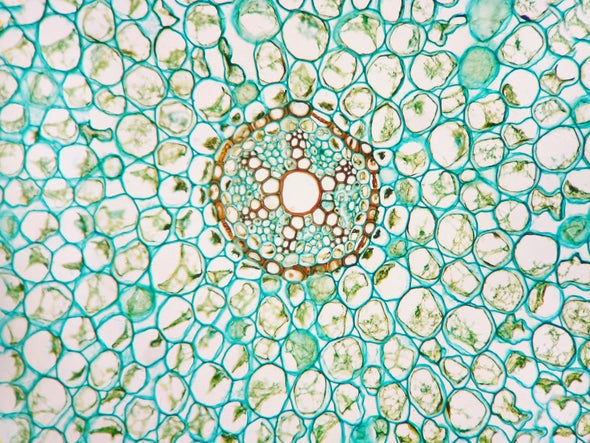What response do you expect to happen as the body tries to restore homeostasis?
What is Homeostasis?
Emeritus Professor Kelvin Rodolfo of the University of Illinois at Chicago's Department of Globe and Ecology Sciences provides this answer

Homeostasis, from the Greek words for "same" and "steady," refers to any process that living things utilise to actively maintain adequately stable weather condition necessary for survival. The term was coined in 1930 by the md Walter Cannon. His book, The Wisdom of the Torso, describes how the human body maintains steady levels of temperature and other vital conditions such every bit the water, common salt, carbohydrate, poly peptide, fat, calcium and oxygen contents of the claret. Similar processes dynamically maintain steady-state weather condition in the Earth'southward surround.
Homeostasis has found useful applications in the social sciences. Information technology refers to how a person under conflicting stresses and motivations can maintain a stable psychological condition. A club homeostatically maintains its stability despite competing political, economic and cultural factors. A good case is the law of supply and need, whereby the interaction of supply and need keeps market place prices reasonably stable.
Homeostatic ideas are shared by the scientific discipline of cybernetics (from the Greek for "steersman"), defined in 1948 by the mathematician Norbert Wiener as "the entire field of control and communication theory, whether in the machine or in the animal." Cybernetic systems tin "remember" disturbances and thus are used in computer science to shop and transmit information. Negative feedback is a key homeostatic and cybernetic concept, referring to how an organism or organisation automatically opposes whatsoever modify imposed upon it.
For example, the human being body uses a number of processes to command its temperature, keeping it close to an boilerplate value or norm of 98.6 degrees Fahrenheit. Ane of the most obvious physical responses to overheating is sweating, which cools the trunk by making more than wet on the skin available for evaporation. On the other mitt, the body reduces rut-loss in common cold surroundings by sweating less and reducing blood circulation to the skin. Thus, whatever change that either raises or lowers the normal temperature automatically triggers a counteracting, contrary or negative feedback . Here, negative merely ways opposite, non bad; in fact, it operates for our well being in this example. Positive feedback is a response to change from the normal condition that increases the departure even more.
For example, if a person's temperature is raised to about 107 degrees Fahrenheit, the negative feedback systems stop operating. A person with a high fever has hot, dry skin if they do sweat to help absurd it. Not but have the negative feedback systems shut down in such a instance; the increased temperature speeds up the body chemistry, which causes the temperature to ascension even more, which in plow speeds up the trunk chemistry even more than, and and so forth. This vicious bike of positive feedback, a "runaway" process, can only terminate in death if not stopped.
It is important to emphasize that homeostatic reactions are inevitable and automatic if the system is performance properly, and that a steady state or homeostasis may be maintained by many systems operating together. For example, flushing is another of the body'south automatic responses to heating: the peel reddens considering its small blood vessels automatically aggrandize to bring more heated blood close to the surface where information technology can absurd. Shivering is another response to chilling: the involuntary movements burn body tissue to produce more body rut.
Negative feedback arises out of balances between forces and factors that mutually influence each other. To illustrate several of its important characteristics, we can regard a automobile and its driver as a unified, complex, homeostatic or "goal-seeking" system--a cyborg, or "cybernetic organism," in that information technology seeks to keep the machine moving on track. The driver does not steer by property the wheel in a fixed position simply keeps turning the wheel slightly to the left and correct, seeking the wheel positions that volition bring the naturally meandering auto back on track. Disturbance, or departure from equilibrium, is equally every bit important as negative feedback: Systems cannot correct themselves if they do not stray.
Oscillation is a common and necessary behavior of many systems. If the auto skids, the driver automatically responds by quickly steering in the opposite direction. Such sharp negative feedback, however, usually over-corrects, causing the automobile to move toward the other side of the road. A negative feedback, if it is as large every bit the disturbance that triggered it, may become an impressed change in the direction opposite to that of the original disturbance. The car and driver recovers from the sideslip past weaving from side to side, swerving a fiddling less each time. In other words, each feedback is less than the last departure from the goal, so the oscillations "damp out." Negative feedback takes time and such a fourth dimension lag is an essential characteristic of many natural systems. This may prepare the system to oscillating higher up and below the equilibrium level.
Source: https://www.scientificamerican.com/article/what-is-homeostasis/
0 Response to "What response do you expect to happen as the body tries to restore homeostasis?"
Post a Comment